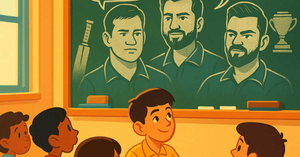Determining the right time to involve a counselor or therapist can be challenging for any parent. While it’s natural to try to manage your child’s struggles at home, there are instances when professional help becomes essential. This article outlines key signs that may indicate your child could benefit from counseling or therapy, how to evaluate the need for intervention, and steps to take when seeking professional support.
Recognizing the Signs
Persistent Emotional Distress
If your child has been experiencing prolonged sadness, anxiety, or irritability, it may be a sign that the emotional burden is too heavy to handle without professional guidance. While occasional mood swings are normal, consistent feelings of hopelessness or fear that last for weeks or months should be taken seriously.
Behavioral Changes
Significant shifts in behavior can also indicate that a child is struggling:
- Social Withdrawal: If your child avoids friends, family gatherings, or school activities they once enjoyed, it could signal underlying issues.
- Aggressive Outbursts: Increased irritability or anger, especially if uncharacteristic, may be a way of expressing internal pain.
- Decline in Academic Performance: A sudden drop in grades or disinterest in schoolwork can be a reflection of the mental and emotional strain your child is experiencing.
- Changes in Sleep or Appetite: Persistent difficulty sleeping, excessive sleeping, or noticeable changes in eating habits can all be physical manifestations of emotional distress.
Impact on Daily Life
When emotional or behavioral challenges begin to interfere with your child’s daily functioning—at school, during social interactions, or in family settings—it’s a strong indicator that professional help may be needed. Your child might struggle to concentrate, lose interest in hobbies, or become disengaged from activities that once brought them joy.
Signs of Trauma or Bullying
If your child has experienced bullying, abuse, or any traumatic event, the psychological effects may be profound. Symptoms such as flashbacks, nightmares, or heightened anxiety in specific settings (like school) suggest that their feelings might benefit from professional intervention to process the trauma and develop coping strategies.
Self-Harm or Suicidal Thoughts
Any indication of self-harm, suicidal ideation, or talk of self-harm must be treated with urgency. These signs are clear indicators that your child is in significant distress and requires immediate professional support.
Factors to Consider
Duration and Severity
Assess how long the troubling behaviors have persisted and how severe they are. Occasional setbacks can be a part of growing up, but if negative symptoms persist beyond a few weeks or intensify over time, it’s a clear signal to seek help.
Impact on Functioning
Consider the extent to which your child’s struggles affect their academic performance, social interactions, and family relationships. If their emotional state is hindering their ability to lead a balanced life, professional guidance can be pivotal in restoring their well-being.
Family History and External Stressors
A family history of mental health issues, previous traumatic experiences, or ongoing stressors (like bullying or family conflict) can also influence the decision. In such cases, early intervention by a counselor or therapist can provide preventative care and mitigate long-term consequences.
Types of Professional Support
School Counselors
School counselors are often the first line of support within the educational system. They can provide immediate assistance, help mediate conflicts, and guide you toward additional resources if needed. They are particularly effective for issues that primarily affect school performance and peer relationships.
Child Psychologists
Child psychologists specialize in the mental and emotional development of children. They can diagnose and treat a range of issues, from anxiety and depression to trauma resulting from bullying or abuse. Working with a child psychologist often involves structured therapy sessions that are tailored to the child’s specific needs.
Family Therapists
Sometimes, a child’s struggles are intertwined with family dynamics. Family therapy can help address systemic issues and improve communication among family members. This approach ensures that everyone in the household is involved in the healing process.
Specialized Therapists
For specific issues such as trauma or behavioral disorders, therapists who specialize in areas like cognitive-behavioral therapy (CBT) or trauma-informed care may be most effective. These professionals can offer targeted strategies to help your child build resilience and coping skills.
How to Approach the Process?
Starting the Conversation
Initiate a gentle, open conversation with your child about how they’ve been feeling. Ask open-ended questions like, “How have you been feeling lately?” or “Is there anything that’s been bothering you at school?” Approach the topic without judgment, and let your child know that seeking help is a sign of strength, not weakness.
Research and Referrals
- Seek Recommendations: Talk to your pediatrician, school counselor, or trusted friends and family members who have had positive experiences with mental health professionals.
- Research Options: Look for professionals who specialize in the issues your child is facing. Read reviews, check credentials, and ensure that the therapist or counselor is experienced in working with children.
Making the Appointment
Once you’ve identified potential professionals, schedule a consultation. Many therapists offer an initial session to determine whether their approach aligns with your child’s needs. Use this opportunity to ask questions about their methods, experience, and what you can expect from the sessions.
Preparing Your Child
Explain to your child why you’re seeking help and what they can expect. Reassure them that the therapist is there to listen and help them feel better, and emphasize that it’s a normal and positive step towards feeling happier and more confident.
Involving the Family
Sometimes, including other family members in therapy can be beneficial, especially if the issues are affecting the whole family. Family therapy sessions can improve communication and support systems within the home, providing a more holistic approach to recovery.
Overcoming Stigma
One of the most significant barriers to seeking professional help is the stigma associated with therapy. It’s important to:
- Normalize Therapy: Discuss how therapy is a common and effective tool for managing stress, processing emotions, and building resilience.
- Share Positive Stories: If appropriate, share experiences of others who have benefited from counseling or therapy. This can help your child see that seeking help is both normal and beneficial.
- Focus on Growth: Emphasize that therapy is about learning new skills and strategies to cope with challenges, not about fixing something that’s “wrong” with them.
Conclusion
Deciding when to involve a counselor or therapist is a crucial step in ensuring your child’s well-being. Recognize the signs—persistent emotional distress, behavioral changes, academic decline, and social withdrawal—as indicators that professional intervention may be needed. By considering the severity and duration of symptoms, and understanding the impact on your child’s daily life, you can make an informed decision. Remember, seeking help is a proactive, empowering step towards healing and growth. With the right support, your child can develop the tools they need to manage challenges, build resilience, and lead a happier, more balanced life.









Be the first one to comment on this story.